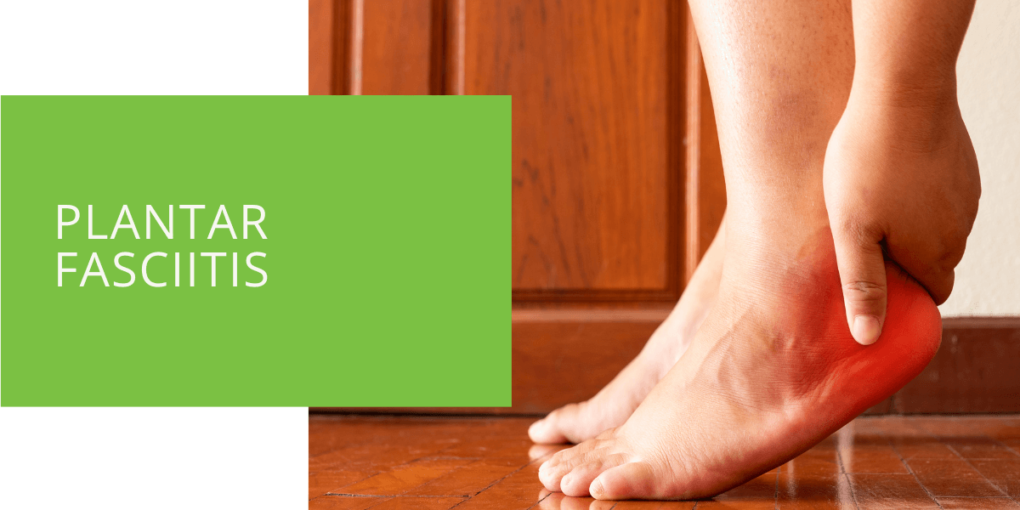Plantar Fasciitis: Causes, Symptoms & Treatment
Plantar fasciitis is a common foot condition that causes pain and inflammation in the heel and arch. It is one of the most common causes of heel pain and can be a long-term issue if left untreated. This article will explore the causes, symptoms, and treatment options for plantar fasciitis, as well as provide tips for preventing and managing this condition.
What is Plantar Fasciitis?
Plantar fasciitis is a condition that affects the plantar fascia, a band of tissue that runs along the bottom of your foot and connects your heel bone to the toes. It is responsible for supporting the arch of your foot and plays a crucial role in your body's ability to absorb shock when you walk or run. When the plantar fascia becomes inflamed or strained, it can cause pain and discomfort in the heel and arch of the foot.
Prevalence and Risk Factors
Plantar fasciitis is a common foot condition affecting people of all ages and activity levels. It is more likely to occur in people who are overweight, has high arches or flat feet, or engage in activities that put a lot of stress on the feet, such as running or standing for long periods. People with occupations requiring them to stand or walk for long periods, such as teachers or retail workers, are also at an increased risk of developing plantar fasciitis.

Symptoms of Plantar Fasciitis
Characteristic Foot Pain
The most common symptom of plantar fasciitis is pain in the heel and arch of the foot, especially when you take your first steps in the morning or after a period of inactivity. The pain is usually described as a sharp, stabbing sensation ranging from mild to severe. It may also be accompanied by swelling or tenderness in the heel or arch.
Other Possible Symptoms
In addition to heel and arch pain, plantar fasciitis may also cause other symptoms, such as:

Causes of Plantar Fasciitis
Overuse Injuries
One of the most common causes of plantar fasciitis is overuse injuries, which occur when the feet are subjected to excessive stress or strain. This can result from engaging in high-impact activities, such as running or jumping, or from standing or walking for long periods on hard surfaces. Overuse injuries can cause the plantar fascia to become strained or inflamed, leading to pain and discomfort in the heel and arch.
Structural Foot Abnormalities
Certain structural abnormalities of the foot can also increase the risk of developing plantar fasciitis. These abnormalities may include high arches, flat feet, or misalignment of the heel and ankle. These structural issues can strain the plantar fascia, leading to inflammation and pain.
Certain Occupations and Activities
Certain occupations and activities may also increase the risk of developing plantar fasciitis. This includes jobs that require standing or walking for long periods, such as teaching or retail work. Additionally, people who engage in activities that strain the feet, such as running or dancing, may be more prone to developing plantar fasciitis.

Treatment Options for Plantar Fasciitis
Non-Surgical Treatment
If you are experiencing pain and discomfort from plantar fasciitis, several non-surgical treatment options may be recommended by a podiatrist or other healthcare provider. These options may include:
- Stretching and Strengthening Exercises: Stretching and strengthening exercises can help to improve the flexibility and strength of the muscles and tissues in the foot, which can help to alleviate pain and discomfort caused by plantar fasciitis. Some common exercises that may be recommended include calf stretches, plantar fascia stretches, and toe raises. It is important to consult with a healthcare provider or physical therapist before starting any new exercise program.
- Orthotic Devices: Orthotic devices, such as arch supports or custom-made orthotics, can help to provide extra support and cushioning for the foot, which can help to reduce strain on the plantar fascia. These devices can be purchased over the counter or custom-made by a podiatrist or other healthcare provider.
- Anti-Inflammatory Medication: Over-the-counter or prescription anti-inflammatory medication, such as ibuprofen or naproxen, can help to reduce inflammation and pain in the heel and arch. These medications should be taken as directed by a healthcare provider.
Surgical Treatment
In some cases, surgical treatment may be necessary to treat plantar fasciitis. This is usually only considered if non-surgical treatment options have been tried and have not been successful in relieving pain and discomfort. Several different types of surgery may be recommended, depending on the severity of the condition and the patient's specific needs.
Some common types of surgery for plantar fasciitis include:
- Plantar fascia release surgery: This procedure involves cutting the plantar fascia to relieve tension and reduce pain.
- Heel spur removal surgery: If a heel spur contributes to pain and discomfort, it may be necessary to remove it surgically.
- Tendon transfer surgery: In some cases, a tendon transfer procedure may be recommended to correct structural abnormalities of the foot that contribute to plantar fasciitis.
Recovery and Rehabilitation
Recovery and rehabilitation following surgery for plantar fasciitis will vary depending on the specific procedure and the individual patient. Physical therapy may be recommended to help improve flexibility and strength in the foot and lower leg. It is important to follow the recommendations of a healthcare provider to ensure a successful recovery.

Tips for Prevention and Management of Plantar Fasciitis
Wearing Proper Footwear
One of the most important things you can do to prevent or manage plantar fasciitis is to wear proper footwear. This includes shoes that provide good arch support and cushioning for the foot and shoes that are appropriate for your activity level and foot type. Avoid wearing shoes with high heels or poor arch support, as these can increase the risk of developing plantar fasciitis.
Maintaining a Healthy Weight
Carrying excess weight can put additional strain on the feet and increase the risk of developing plantar fasciitis. Maintaining a healthy weight through diet and exercise can help to reduce the risk of this condition.
Gradually Increasing Physical Activity
If you plan to increase your physical activity level, it is important to do so gradually. Sudden increases in activity can put extra strain on the feet and increase the risk of developing plantar fasciitis. It is also important to choose activities that are appropriate for your fitness level and use proper footwear when participating.
Conclusion
Plantar fasciitis is a common foot condition that causes pain and inflammation in the heel and arch. Overuse injuries, structural foot abnormalities, and certain occupations and activities can cause it. Several non-surgical and surgical treatment options are available for plantar fasciitis, and the best option will depend on the severity of the condition and the patient's specific needs. To prevent or manage plantar fasciitis, it is important to wear proper footwear, maintain a healthy weight, and gradually increase physical activity.
If you are experiencing pain and discomfort in your heel and arch, it is important to consult with a podiatrist or other healthcare provider for proper diagnosis and treatment.
FAQ
What is the most common cause of plantar fasciitis?
The most common cause of plantar fasciitis is overuse injuries, which occur when the feet are subjected to excessive stress or strain. This can result from engaging in high-impact activities, such as running or jumping, or from standing or walking for long periods on hard surfaces.
What is the fastest way to cure plantar fasciitis?
The fastest way to cure plantar fasciitis will depend on the severity of the condition and the patient's specific needs. Non-surgical treatment options, such as stretching and strengthening exercises, orthotic devices, and anti-inflammatory medication, may be effective in relieving pain and discomfort. Surgical treatment may be necessary in some cases to resolve the issue fully. It is important to consult with a healthcare provider for a proper diagnosis and treatment plan.
What does the beginning of plantar fasciitis feel like?
The beginning of plantar fasciitis may be characterized by pain and discomfort in the heel and arch of the foot, especially when you take your first steps in the morning or after a period of inactivity. The pain is usually described as a sharp, stabbing sensation ranging from mild to severe. It may also be accompanied by swelling or tenderness in the heel or arch.
What causes plantar fasciitis to flare up?
Plantar fasciitis may flare up due to a variety of factors, including:
- Engaging in activities that put a lot of strain on the feet, such as running or standing for long periods
- Wearing inappropriate or ill-fitting footwear
- Being overweight
- Having structural abnormalities of the foot, such as high arches or flat feet
- Having occupations or activities that require standing or walking for long periods
How do you make plantar fasciitis go away?
There are several steps you can take to help make plantar fasciitis go away:
- Seek treatment from a healthcare provider or podiatrist
- Follow a treatment plan that may include stretching and strengthening exercises, orthotic devices, and anti-inflammatory medication.
- Wear proper footwear that provides good arch support and cushioning for the foot
- Maintain a healthy weight
- Gradually increase physical activity to avoid overuse injuries
- Avoid activities or occupations that put a lot of strain on the feet

